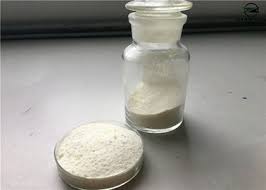Description
Anti-Dyeing Agents: Protecting Whites and Brights from Stray Colors
We’ve all been there: a load of laundry gone wrong. That pristine white shirt, once a beacon of cleanliness, now sporting a faint pink hue thanks to a rogue red sock. This unfortunate situation is a common consequence of dye transfer, and thankfully, there’s a solution – anti-dyeing agents.
These unsung heroes of the laundry room work tirelessly to prevent dyes from bleeding out of colored fabrics and staining lighter items. But how exactly do they work, and why are they essential for maintaining the vibrancy of your wardrobe?
Understanding Dye Transfer: The Culprit Behind Color Bleeding
Dye transfer, also known as color bleeding, occurs when dye molecules detach from colored fabrics during washing and redeposit onto other items in the wash. Several factors contribute to this phenomenon:
- Water Temperature: Hot water increases the solubility of dyes, making them more likely to leach out of fabrics.
- Detergent Type: Some detergents, especially those with harsh chemicals, can damage fabric fibers and loosen dye molecules.
- Fabric Type: Natural fibers like cotton and linen are more prone to dye transfer than synthetic fibers.
- Dye Fixation: Improper dye fixation during the manufacturing process can also lead to color bleeding.
- Water Hardness: Hard water can influence the chemical reactions in washing, increasing the likelihood of dye bleeding.
Enter Anti-Dyeing Agents: The Guardian Angels of Your Laundry
Anti-dyeing agents, also known as dye transfer inhibitors or color catchers, are laundry additives designed to prevent dye transfer during washing. They come in various forms, including:
- Sheets: These disposable sheets contain chemicals that attract and trap loose dye molecules in the wash water. They are convenient and relatively inexpensive, making them a popular choice for everyday laundry.
- Liquids: Liquid anti-dyeing agents are added directly to the washing machine along with the detergent. They often contain polymers that bind to dye molecules, preventing them from attaching to other fabrics.
- Powders: Similar to liquid anti-dyeing agents, powder forms are added to the wash and work by absorbing or binding to loose dyes.
How Anti-Dyeing Agents Work: A Multi-Pronged Approach
The effectiveness of anti-dyeing agents lies in their ability to tackle dye transfer through various mechanisms:
- Adsorption: Many anti-dyeing agents contain polymers with a high surface area that act like sponges, absorbing loose dye molecules from the water.
- Complexation: Some agents contain chemicals that form complexes with dye molecules, rendering them less likely to bind to other fabrics.
- Prevention of Redeposition: By preventing dye molecules from redepositing onto other items in the wash, anti-dyeing agents ensure that colors remain vibrant and whites stay bright.
- Enzymatic Action: Some advanced formulations also contain enzymes that can break down dye molecules, further minimizing dye transfer.
Benefits of Using Anti-Dyeing Agents:
- Protects Whites and Brights: Prevents discoloration and keeps your lighter garments looking their best.
- Maintains Color Vibrancy: Helps prevent fading and keeps your colored clothes looking newer for longer.
- Simplifies Laundry Sorting: Reduces the need for strict color separation, saving time and effort.
- Peace of Mind: Adds a layer of protection against accidental dye transfer disasters.
- Cost-Effective: Prevents potentially ruining entire loads of laundry, saving you money on replacing damaged garments.
Tips for Using Anti-Dyeing Agents Effectively:
- Read the Instructions: Always follow the manufacturer’s instructions for dosage and usage.
- Use Regularly: Incorporating anti-dyeing agents into your laundry routine can help prevent dye transfer over time.
- Consider the Load Size: Adjust the dosage of the anti-dyeing agent based on the size of the load and the intensity of colors being washed.
- Pre-Treat Highly Dyeing Items: For new or brightly colored items that are known to bleed, consider pre-treating them with an anti-dyeing agent before washing.
- Don’t Overload the Washing Machine: Overcrowding the washing machine can reduce the effectiveness of the anti-dyeing agent.
Conclusion: A Laundry Essential for the Discerning Home Launderer
Anti-dyeing agents are a simple yet effective solution for preventing dye transfer and protecting your clothes. By incorporating these agents into your laundry routine, you can enjoy brighter whites, more vibrant colors, and the peace of mind that comes with knowing your clothes are safe from accidental dye transfer disasters. So, the next time you’re stocking up on laundry supplies, don’t forget to add anti-dyeing agents to your list – your wardrobe will thank you!













Reviews
There are no reviews yet.